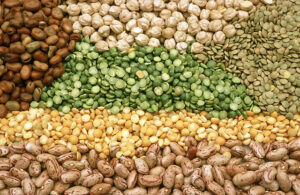LEGUMES

Humans have long known about the benefits of eating legumes and in many parts of the world they are the main source of protein. They are also high in carbohydrate and dietary fibre. Whether you buy them dried, or opt for canned for convenience, you are choosing one of nature’s lowest GI foods. They are high in all 3 types of fibre – soluble fibre, insoluble fibre and resistant starch – which account for many of their metabolic benefits. What’s more they are high in folate, B vitamins and a whole host of minerals. These days supermarkets stock a wide range of dried and canned beans to incorporate into recipes like soups, salads and stews. Other products like hummus, felafel, crunchy chickpea snacks, pulse pastas and noodles are also great ways to incorporate legumes.
For people with diabetes
To those of you who count your carbohydrate intake in grams, exchanges or portions, we have included the details for each of these.
15g carbohydrate exchange – a serve containing 12-18g carbohydrate.
10g carbohydrate portion – a serve containing 7.6-12.5g carbohydrate.
| Energy | Available carbohydrate | Exchanges | Portions | Glycemic load |
| 919kJ/218Cal | 28g | 2 | 3 | 13 |
| Energy | Available carbohydrate | Exchanges | Portions | Glycemic load |
| 845kJ/201Cal | 26g | 2 | 3 | 10 |
| Energy | Available carbohydrate | Exchanges | Portions | Glycemic load |
| 838kJ/200Cal | 27g | 2 | 3 | 11 |
| Energy | Available carbohydrate | Exchanges | Portions | Glycemic load |
| 713kJ/170Cal | 22g | 1.5 | 2 | 4 |
Read more:

Kaye Foster-Powell is an Accredited Practising Dietitian who has worked with people with diabetes for 30 years. She was co-author of the original series of international, best-selling books on the glycemic index. She conducts a specialized private practice for people with diabetes in the Blue Mountains, west of Sydney, Australia.
Contact: Via her website.







